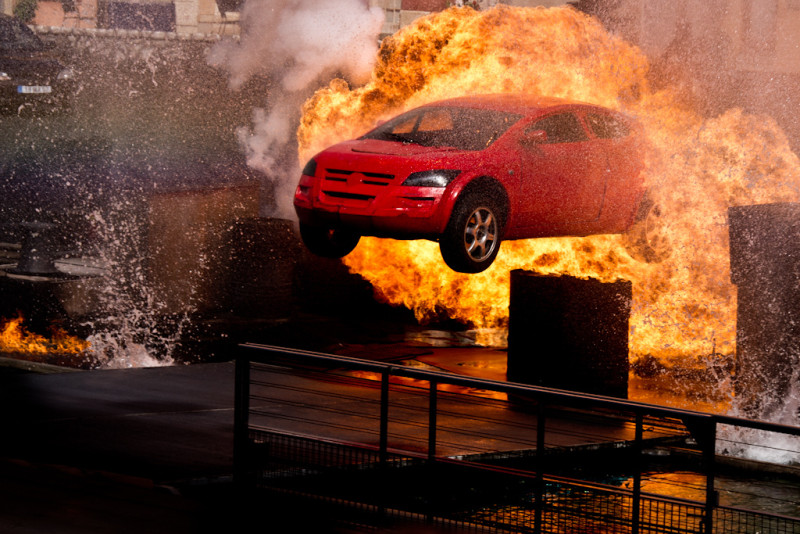
In movies and television, a flaming car often guarantees an explosion. It comes either as a payoff to a lengthy car chase as exhibited on multiple occasions in the Fast and Furious series or as an act of self-sabotage as seen in Breaking Bad when Walter White sets his son’s 2009 Dodge Challenger ablaze after a joy ride.
Has all the pyrotechnics on the screen warped our expectations? Perhaps. Some movies even poke fun at the illegitimacy of car explosions. For instance, during the climactic car chase in 21 Jump Street, a tanker truck gets so shot up that it starts leaking gasoline, but to the dismay of everyone, it does not explode. This prompts one of the characters to remark: “Huh? I really thought that was going to explode.”
But what about real life? Are car explosions as over-the-top as movies make them out to be? In almost all cases, it’s “safe” to say that your car, even if flaming, will not explode like those on the silver screen. While significant damage resembling an explosion can still occur, consumer vehicles are not designed to behave like bombs. Here’s how the whole thing really works…
What Causes Explosions?
Physical explosions, the kind associated with cars, happen when a lot of hot gas in a confined space rapidly increases in volume and releases its energy outwards. The explosion generates a high temperature and extreme shockwaves. This type of explosions tends to occur when a container of explosive material has a ruptured seal or is under a substantial amount of pressure. An overheating boiler tank or an unopened can of beans sitting by the fire pit are two items with explosive properties.
What if You Ignited the Fuel?
The part of the car most susceptible to an explosion is the gas tank since gasoline happens to be highly flammable. So, if lit, it’ll surely explode, right? Not necessarily. Gasoline, although flammable, is not explosive. It’s not a tank of hydrogen gas. If you set the fuel on fire, what would happen is that it’ll burn. The more fuel you have the bigger the flame and the hotter it’ll burn, but it won’t “explode.”
Gas tank fires are considered extremely rare, often caused when parts like the fuel tank, fuel pump or fuel line are not properly installed.
What if It’s a Big Crash?
A car crash, especially a big one, can absolutely start a fire. But, keep in mind that most vehicles today are designed with a crumple zone, an area that absorbs the impact, preventing internal damages to the engine, battery or gas tank.
The fire can start if the crash is so big that it punctures the fuel storage, causing it to spill. If the spillage lands on anything hot enough, it can ignite and have the fire spread rapidly. Drivers are often too traumatized and disoriented by a collision to notice that fire is about to start inside their vehicle. That’s why it’s so important to evacuate a damaged car as quickly as possible after a collision – fire or no fire.
Previous collisions, if not properly assessed, can also lead to fiery results. If shards of hot metal get jarred and start poking at the gas tank, it can spray fuel and create a spark.
What About the Battery?
A defective battery can burst like a grenade and may even sound like a giant explosion, but it still wouldn’t come close to what we see in movies. Still, it’s dangerous enough to destroy the vehicle. The shards and acidic properties of the battery can cause a lot of harm to the driver, or to the person charging the damaged battery.
Electrical wires for stereos and lights can also start a car fire. Regardless of how small the fire is, remember that it can still spread. Cars today are designed with flame-retardant materials in the cabin. These types of materials mitigate and delay the spread of fire, but they can still burn. Don’t get trapped inside, because once the plastics, foams or textiles catch fire, it’ll eat the whole thing up.
Flaming cars are rare but that doesn’t mean the numbers are assuring. According to the National Fire Protection Agency, between 2006 and 2010, more than 150,000 cars caught fire annually, killing approximately 200 people each year. Sure, a flaming car won’t go boom the same way it would in a movie, but it can still be extremely dangerous.






